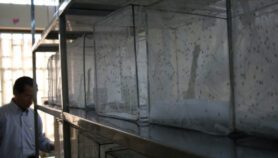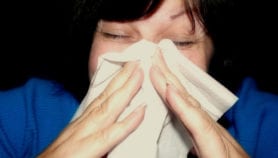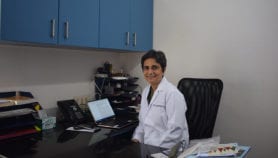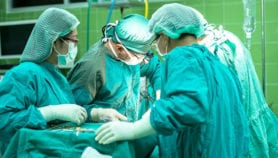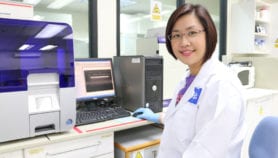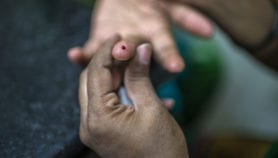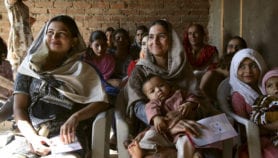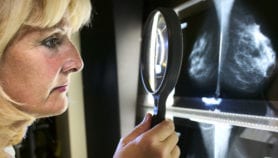16/01/19
China’s gene edited babies spark need for global rules
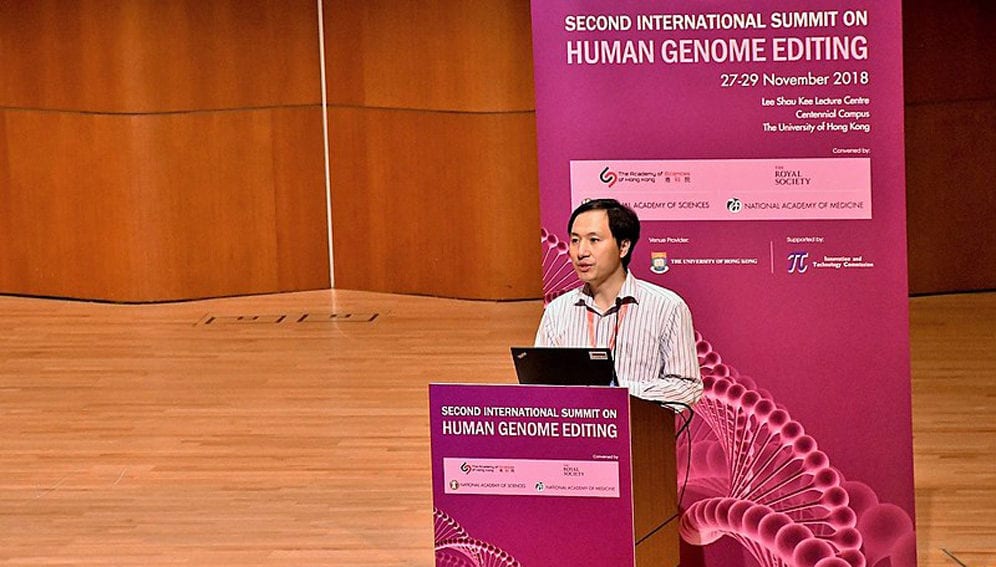
By: Crispin Maslog
Send to a friend
The details you provide on this page will not be used to send unsolicited email, and will not be sold to a 3rd party. See privacy policy.
The birth of the world’s first gene-edited babies raises scientific, as well as ethical, questions.
The world’s first gene-edited babies — twin girls Lulu and Nana (not their real names) — whose birth was announced only two months ago (November 2018) by a young Chinese scientist who “created” them — have sparked a storm in the world science community.
Is their creator, He Jiankui, justified in creating gene-edited human life in the laboratory to produce HIV-resistant embryos that were implanted in the mother’s womb, even if the motive is to find a cure for a disease?
He announced the controversial birth of the babies on the eve of the second International Summit on Human Genome Editing in Hong Kong on 28 November 2018 and formally presented his research at the Summit.
“He Jiankui’s case points to the need for regulation as soon as possible, an international regulation for research involving human life, like gene manipulation. Such regulations can be under the auspices of the United Nations.”
Crispin Maslog
The 28-year-old scientist from the Southern University of Science and Technology in Guangdong told the Summit that Lulu and Nana’s parents were one of seven couples recruited from a group of patients with HIV. He added that at least one more woman from the group is also pregnant with a third gene-edited baby.
In a video, he says his team had altered genes to make them resistant to HIV. This gene-tweaking was done on embryos in a lab dish, later implanted in the twins’ mother, using the CRISPR–Cas9 genome-editing technique to modify the CCR5 gene.
He admits that his work has not yet been published in a scientific journal. Furthermore, other researchers have not gotten access to any data or DNA samples to confirm his claim. But the scientist said that he has submitted studies to journals and a paper will be published in an unspecified journal.
However, Chinese genetic-resources laws prevent publication of the gene sequences of the parents or children. So scientists would have a difficult time verifying He’s claims.
The global science community reacts
The reaction from the science community was immediate, unanimous and negative — the equivalent of a resounding scientific slap on the face.
“Even if the modifications are verified, the procedure was irresponsible and failed to conform to international norms," the organising committee of the Hong Kong Summit said sharply in a statement on 29 November, the day after the Summit.
Media reports say many of the 700 scientists and researchers at the Summit were sceptical about He’s claims, unconvinced about the evidence presented to show his editing was successful. In similar experiments, some cells in embryos may be damaged, incompletely edited or escape editing entirely.
Many scientists expressed outrage, saying that the science behind this procedure was too new to ensure gene editing of human babies was safe. Some said the move could be seen as the first step in making “designer babies” — children made-to-order for intelligence, beauty or other desirable traits.
One of them, Annie Chai Wai Yeeng, project leader of Cancer Research Malaysia, tells SciDev.Net that she and her colleagues heard of He’s babies for the first time only a few days before the Summit when she was visiting the University of Hong Kong, her alma mater.
In an interview with SciDev.Net, Chai says, “It was a surprise to me and all my colleagues…We went through He’s videos describing his research on YouTube and debated among ourselves (on its ethics). I would say majority of us do not totally agree with the rationale he used to justify his work and were quite mad at this rogue scientist.” Chai agrees, however, with He’s choice of technology. “…Putting aside the ethics issue, the technology that He used (the CRISPR-Cas9 editing of a gene) was a pretty easy approach that many scientists in the field have the capability to do.” Chai herself does gene editing in her Cancer Research Malaysia lab.
Apparently, none of the researchers, scientists and media reporters had the chance to ask He questions after his talk at the Summit as he did not show up for any interview.
The Summit audience reaction may be summed up in the words of Jennifer Doudna, a pioneer of the CRISPR-Cas9 genome-editing tool used for the He project: “The thought I kept having was the potential for rogue scientists to use this in unethical ways. It’s a real risk,” said Doudna, a biochemist at the University of California, Berkeley, in an interview with David Cyranoski for Nature.
While it is illegal to deliberately alter the genes of human embryos in many countries including the US, it is not against the law to do so in China. But the practice is opposed by many researchers there. A group of 122 Chinese scientists issued a statement calling He’s actions “crazy” and his claims “a huge blow to the global reputation and development of Chinese science.” (1)
The pushback against He signals the seriousness of his offence. One issue is He working in secret to create the babies. Is He’s experiment ethical? Is it justified to work on gene editing just to find a way to prevent HIV in babies when there are other ways to combat this disease short of gene editing?
Cancer researcher Chai tells SciDev.Net: “This is still a very debatable topic. In my opinion, only if the gene editing experiment is the only possible solution . . . to save someone’s life, will it be justified . . . This does not seem to be the case for He’s purpose in creating the gene-edited babies.”
If human embryos can be edited, in the future, babies can be genetically engineered just to have traits like intelligence or athletic prowess that have nothing to do with preventing disease.
Another concern is safety. The methods used for gene editing can alter other genes in unpredictable ways. Such a step would make a permanent change to the germline that could be passed on to future generations.
A need to regulate
There is no question that gene editing, like all scientific experiments involving human life, should be regulated. My wife, who used mice in her experiments at the National Institute of Molecular Biology and Biotechnology at the University of the Philippines Los Baños, had to follow strict regulations and ethics guidelines. How much more for experiments involving human life?
Chai suggests that “All academic institutions and relevant government ministries should have regulation committees to oversee this. [They need] to ensure all scientific experiments are of high integrity and are carried out in compliance with the [regulations of the] academic institution or country,” she opines. Chai adds that He should be sanctioned by authorities in his country.
The Telegraph reported on 7 January that He is under armed guard after receiving death threats and the Chinese government has launched an investigation into his work. He has been confined to a state-owned apartment in the city of Shenzhen since December.
He Jiankui’s case points to the need for regulation as soon as possible, an international regulation for research involving human life, like gene manipulation. Such regulations can be under the auspices of the United Nations.
From here on, the likes of He Jiankui should ask permission from an international body before they tamper with the genes of human life.
Crispin C. Maslog, former journalist with Agence France-Presse, is an environmental activist and former science professor, Silliman University and University of the Philippines Los Baños, Philippines. He is a founding member and now Chair of the Board, Asian Media Information and Communication Centre, Manila.
This piece was produced by SciDev.Net’s Asia & Pacific desk.
[REFERENCE]
1. Chinese Scientist Claims to Use Crispr to Make First Genetically Edited Babies, New York Times, November 26, 2018.





